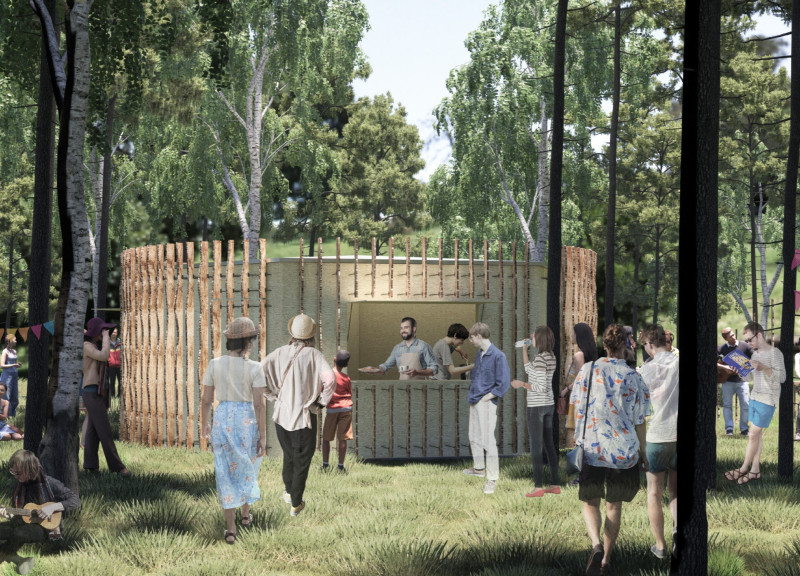5 key facts about this project
THE GROVE is a proposal for a food court at the Sansusi festival, designed to emphasize sustainability and community interaction. Set within a natural landscape, the design aims to create a space that is both functional and welcoming. A radially symmetrical layout supports easy movement and connection among visitors, enhancing their overall experience while honoring the surroundings.
Design Concept
The layout incorporates a radially symmetrical form that facilitates 360° circulation. This arrangement allows people to move freely and encourages casual interactions. With a shared internal structure for three caterers, the design enables collaboration and efficient service, making it easier for festival-goers to enjoy their meals together.
Materials
Plain sawn lumber serves as the main material, reflecting a commitment to sustainable practices. By using entire trees, the design minimizes waste and maximizes the use of resources. Structural framing consists of standard dimensions such as 2x4s and 4x4s, which provide solid support and ensure stability for the overall structure of the food court.
Architectural Aesthetics
The exterior of THE GROVE features vertical, live-edge slats that connect the building with the forest environment. These design elements create an attractive facade while maintaining a natural look. This connection with the landscape helps blend the building into its surroundings and makes the experience more enjoyable for visitors.
Functional Layout
In the food court area, vertical slats are used both as boundaries and seating. This practical design choice not only saves space but also encourages people to gather and socialize. By shaping the surrounding dining area with these elements, the design fosters a sense of community and enhances the overall atmosphere for attendees.
The thoughtful combination of spaces and materials results in a structure that respects its environment while meeting the needs of its users. The design creates an inviting area that promotes social interaction and a strong community presence.






















































